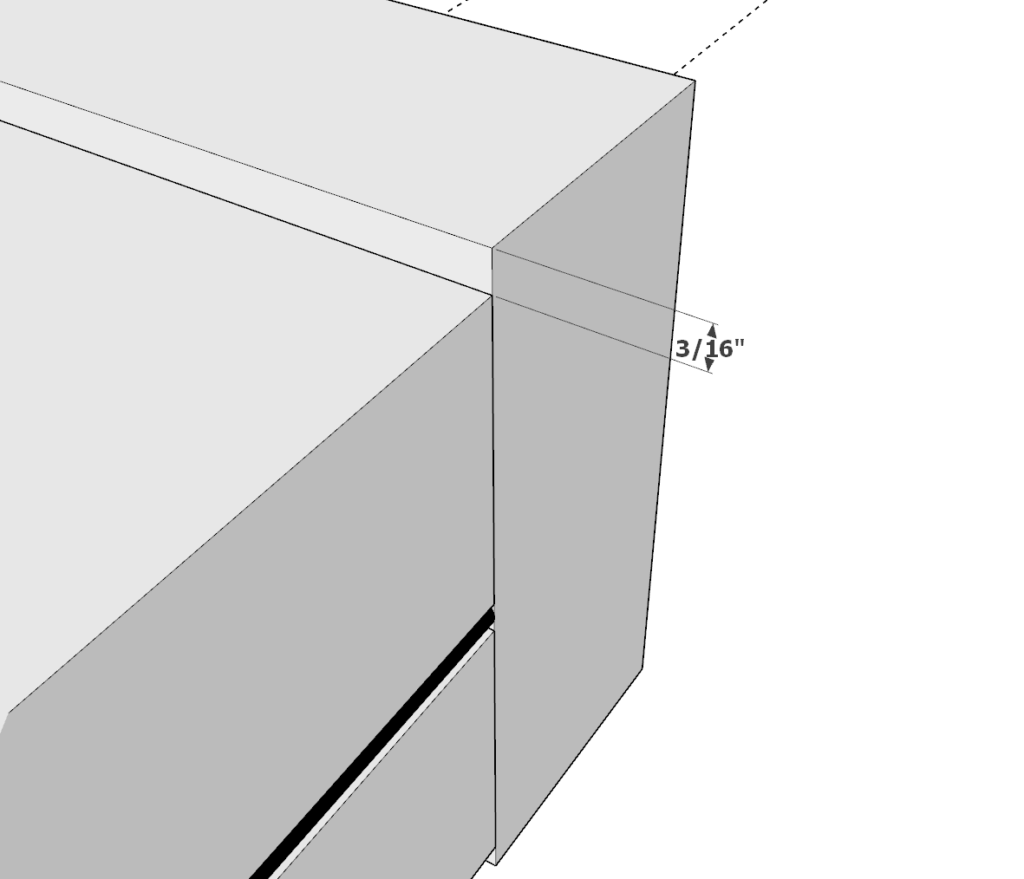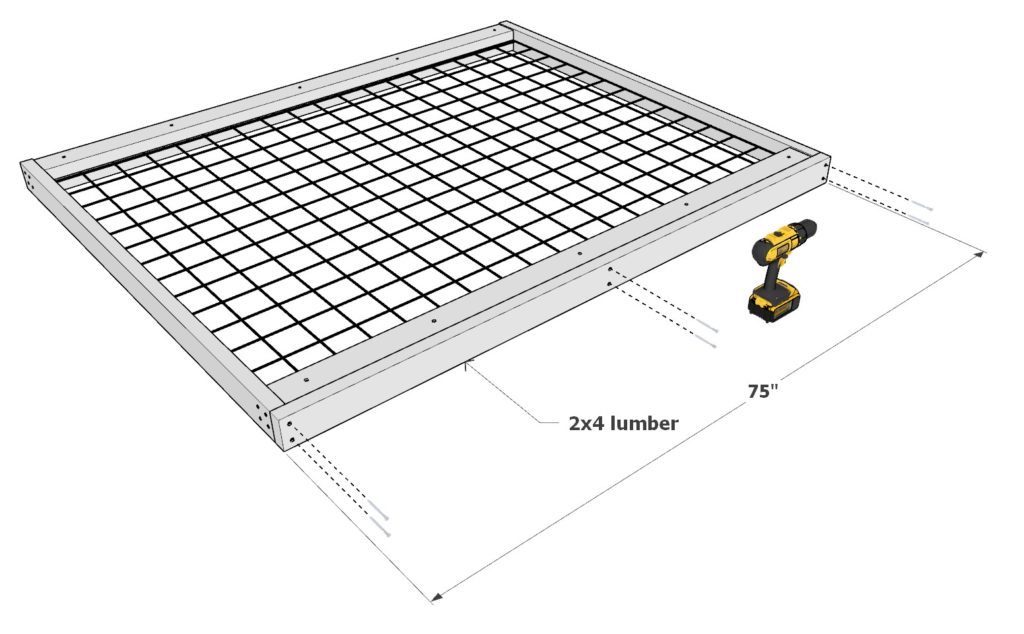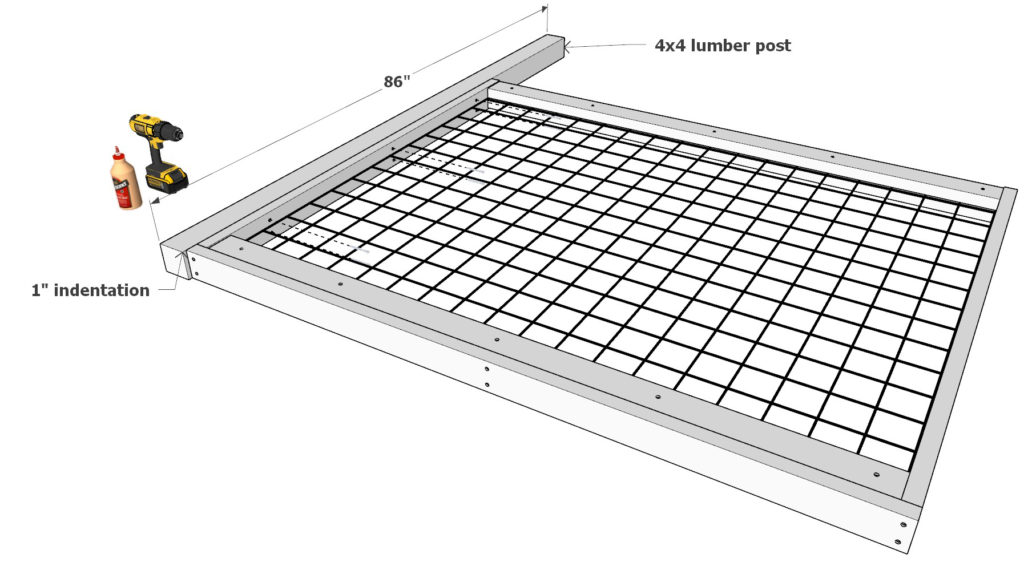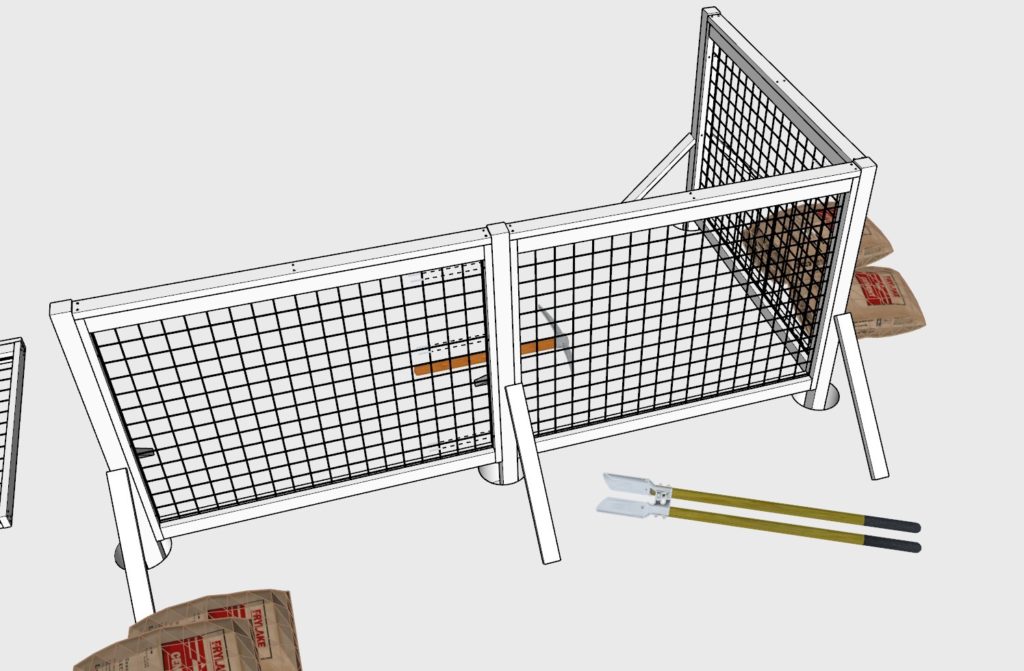Introduction
A fence is not only a security feature in your home but also a design element. It can set the tone for the whole backyard and play a significant role in your outdoor aesthetics. Well-built fences offer privacy, safety, and can increase the attractiveness of your property. If constructed correctly, a fence also provides a beautiful and peaceful sanctuary to spend time in with family and friends. In this guide, we explore the benefits and instructions to creating your very own magnificent and long-lasting DIY fence using Wild Hog black metal railing panels.


Start Building Your Ideal Fence
Wild Hog Black Metal Railing Panels are the perfect blend of sophistication and resilience. These 36 in. x 72 in. panels suit any backyard haven and offer a size suitable for varied uses. Emerging from large and dense welded hog panels, these smaller panels present an ideal solution for an array of applications.
These 6-gauge welded 4 in. x 4 in. mesh pattern panels balance style and durability. With a notable design allowing remarkable visibility, they are excellent for several uses, including fences, railings, arbors, and trellises. Their three-layered powder coating and customizable nature make them suitable for indoor and outdoor projects, horizontal, vertical or stair installations.
Enjoy the Simple Assembly Process
Building a DIY fence using these panels is straightforward. Regular construction 2×4 and 4×4 lumber pieces, basic tools, and our step-by-step instructions are all you need to construct a beautiful and practical fence for your home.
The Joy of Creating
Building your very own DIY fence is an exciting venture. This project provides the perfect opportunity to dive into your creative skills and design a custom house fence that fits your personal taste and necessities.
Security, Privacy and the View
What sets Wild Hog Black Metal Panels apart is how they offer a perfect blend of security and privacy without compromising on visibility. Fantastic for visually stunning environments, their design allows homeowners to enjoy the views that surround them, resulting in an especially great feature for homes located next to beautiful landscapes or scenic views.
Keep Out Unwanted Guests
This type of fence is perfect for providing your backyard with increased privacy and security. The height and material of this fence make it a reliable deterrent against most animals, from deer and other large creatures to smaller wildlife that might usually sneak through more traditional fence types.
Boost your property's curb appeal with a DIY fence plan
Adding a self-built, custom-designed fence not only enlivens your home’s exterior but could increase its overall value. By using our detailed plan with Wild Hog Black Metal Railing Panels, you create a durable, visually attractive fence – a feature potential buyers are sure to appreciate.
Ready to Start?
Our DIY fence plan delivers everything you need to craft a secure and stunning addition to your backyard. Regardless of your building experience, this project will enhance your home and give you a sense of fulfillment upon completing a valuable and eye-catching project.
Purchase your easy-to-follow plan now, and start creating the stylish, secure sanctuary you’ve always imagined for your backyard. This could be the ideal home improvement project that will make your property stand out while safeguarding your loved ones and pets. Remember, the magic is in you. So keep your enthusiasm high, and soon you’ll have a beautiful, safe, and stylish fence that’s uniquely yours. Who knows–this may be the start of your new DIY journey!
Check list before you start the DIY fence building.
It is important to consider a few important things before starting a DIY fence.
- You will likely need a permit. You will need to check your local codes and regulations.
- Some areas may have a homeowners association that have rules to govern the style, size, and placement of fences.
- If unclear, you may also need to check property lines and discuss the project with your neighbors before construction.
- Consider the building material. A cedar fence, if built appropriately, can last up to 40 years. Here in California, the lumber of choice for fencing is redwood due to its availability, durability, and cost.
- Determine fence gate location and all access points.
- When building with the fence panels, you will need to calculate the total length of each side of your property and calculate the total panel length needed. You may need to install a partial panel to make everything fit. (Good thing is that these panels are easily customizable, and the metal can be cut with small bolt cutters or a cutting wheel).
- Call the utility company before construction to ensure your fence posts will not hit any utility lines.
- Determine the number of posts needed for the project.
Time
Variable depending on size of project.
Cost
The estimated cost is $160 per panel. Material prices may vary over time. Please research current costs for accuracy.
Skill level required
Beginner
Download the PDF plans

Fence PDF plan
What is included in the PDF download?
- Easy to read step by step instructions
- Material list
- Tools needed
- Helpful links to materials and tools needed
DIY Fence Panel Dimensions

Recommend tools and materials
Available with purchase of the DIY plan. Thank you for your support and making this website possible!
Lumber list and cut list per panel
Available with purchase of the DIY plan. Thank you for your support and making this website possible!
Step 1: Assembling the Frame
First, gather two 60-inch 2×4 lumber pieces and two 72-inch 2×4 lumber pieces. Arrange them into a rectangular frame as shown in the provided diagram. Before attaching the pieces, predrill holes to prevent the wood from splitting. Secure the frame together using 3-inch screws.
To ensure uniformity across all the panels in your fence, create a small 3/16-inch indent on each side of the 72-inch 2×4 lumber pieces. You can use a 3/16-inch spacer, made from scrap lumber, as a guide to achieve consistent spacing throughout your project. Simply reuse this spacer for each panel you build.


Step 2: Installing the Metal Railing Panel
Next, place the 60-inch x 72-inch metal railing panel into the frame you’ve created. Ensure that the panel is properly positioned and secure it using double point staples. Hammer the staples into place until they are flush with the wood and metal.
To prevent the metal railing panel from sliding or shifting within the frame, strategically place the staples to provide adequate support and stabilization. This may require evenly distributing the staples throughout the panel’s edges.



Step 3: Securing the Metal Railing Panel with Additional 2x4 Lumber
Now, take two additional 72-inch 2×4 lumber pieces and position them directly on top of the metal railing panel, as illustrated in the provided diagram. Before attaching them, predrill holes to prevent the wood from splitting. Then, secure the 2×4 lumber pieces using screws, ensuring that the metal panel is firmly held in place within the frame.


Step 4: Attaching the Top Rail to the Fence Panel
Next, grab your 75-inch 2×4 lumber piece, and position it perpendicular to the two outer 72-inch pieces to create the top rail of the fence panel. Make sure it’s properly aligned with the edges of the fence panel.
Predrill holes to prevent the wood from splitting, and then secure the top rail with screws, ensuring a strong and stable connection with the rest of the fence panel.

Step 5: Attaching the Fence Panel to 4x4 Posts
Now, it’s time to attach the fence panel to the 86-inch 4×4 lumber pieces, which will serve as support posts. Depending on your setup, you may need one or two posts for each panel. More information on the arrangement is provided further below in this step.
First, indent the fence panel by 1 inch, as shown in the provided diagram. Align each 86-inch 4×4 lumber piece as shown in the diagram. Make sure they are properly positioned and flush with the outer edges.
Predrill holes to prevent wood from splitting, and then secure the fence panel to the 4×4 posts using screws, creating a strong and stable connection.
When starting your fence installation, you will need a “starter” panel with two support posts. For the rest of the panels, only one support post is required, as they will share the neighboring posts. Further information on the installation process can be found in the upcoming steps.




Step 6: Securing the Metal Railing on the "Starter" Panel
ONLY on the “starter” panel, add four 53-inch 2×2 lumber pieces in the positions indicated in the provided diagram. These 2×2 lumber pieces will help secure the metal railing within the frame, ensuring the stability and durability of the fence panel.
As before, predrill holes to prevent wood from splitting, and then attach the 2×2 pieces to the fence panel using screws. Make sure they are properly aligned and securely fastened to ensure the best possible protection and support for the metal railing.


Step 7: Installing Post Caps for a Finished Look
Finally, add post caps to the top of the 4×4 support posts. These decorative elements not only add a polished and complete appearance to your fence but also provide protection to the top of the posts from weather and moisture damage.
Depending on the post cap design and where you purchase them, they may need to be glued or secured with screws. Follow the manufacturer’s recommendations to ensure a secure and proper installation.

Step 8: Installing DIY Fence Panels on Your Property
Now that your fence panels and support posts are assembled, it’s time to install them on your property. Please note that this guide does not cover the details of digging holes, filling holes with gravel, or handling cement work. The images and descriptions below showcase how the fence panels connect with one another during the installation process.
1. Begin with the “starter” panel, which has two posts attached. Set it in place and secure it according to your preferred method (e.g., cementing the posts into holes). Ensure proper alignment and levelness before moving on to the next panel.
2. Add the subsequent fence panel, which has only one post, connecting it to the previous panel’s shared post. Make sure the panels are securely connected and stable.
3. Continue adding panels in this manner until the entire perimeter is fenced.
4. Once all fence panels are installed, attach the 53-inch 2×2 lumber pieces to every panel (besides the starter panel). These additional lumber pieces will further secure the metal railing in place and complete your DIY fence.
By following these steps, you’ll have successfully installed a stylish, secure, and professionally crafted fence around your home, achieving both elegance and functionality for your outdoor space.






Step 9: Finishing Touches – Staining, Painting, or Treating the Fence
Congratulations, your fence is now assembled and installed! To ensure its longevity and enhance its appearance, consider staining, painting, or treating the wood with a wood preservative.
If you’ve used pressure-treated lumber for your fence, there’s no need to apply additional wood preservatives, as the lumber has already been treated to resist decay and insect damage. However, you can still choose to stain or paint the fence to match your desired aesthetic.
Select a high-quality exterior stain, paint, or wood preservative that’s appropriate for your climate and weather conditions. Carefully follow the manufacturer’s instructions for application and drying times.
By taking this extra step, you’re not only personalizing your fence but also protecting and extending its lifespan, ensuring that it remains a beautiful and secure feature of your home’s outdoor space for years to come.


